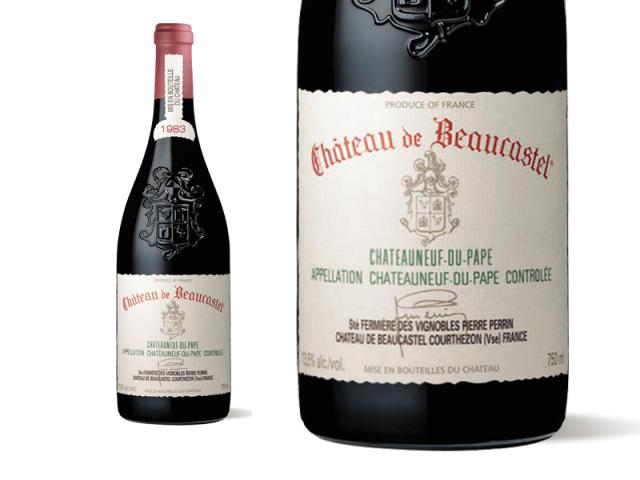Presentation
Presentation
ChûÂteau de Beaucastel has long been considered one of the great wines of France. It is unanimously renowned for its balance, elegance and ageing potential. Beaucastel has an extraordinary terroir at the Northern end of the appellation with heavy exposure to the Mistral. All 13 varieties of the appellation have been organically grown here since the sixties.
The vintage
A good vintage
Location
ChûÂteauneuf du Pape, between Orange and Avignon.
ChûÂteau de Beaucastel red is a 70-hectare vineyard.
ChûÂteau de Beaucastel red is a 70-hectare vineyard.
Terroir
ChûÂteau de Beaucastel is 110 hectares, with one single plot at the north of the appellation. The terroir is archetypal of the best terroirs in ChûÂteauneuf: rolled pebbles on the surface, sand, clay and limestone deeper down. The vines are old and have been organically grown for 50 years, which has allowed the roots to grow exceptionally deep.
Beaucastel grows all thirteen grape varieties authorised by the appellation.
Beaucastel grows all thirteen grape varieties authorised by the appellation.
Ageing
Each variety is harvested manually and separately. Vinification is completed in truncated oak barrels for the reductive grapes (Mourvû´dre and Syrah) and in traditional tiled cement tanks for the oxidative grapes (such as Grenache). After malolactic fermentation, the family blends the different varieties and then the wine ages in oak Foudres for a year before being bottled.
Varietals
Grenache : 30%
Mourvû´dre : 30%
Vaccarû´se, Terret noir, Muscardin, Clairette, Picpoul, Picardan, Bourboulenc, Roussanne : 15%
Counoise : 10%
Syrah : 10%
Cinsault : 5%
Mourvû´dre : 30%
Vaccarû´se, Terret noir, Muscardin, Clairette, Picpoul, Picardan, Bourboulenc, Roussanne : 15%
Counoise : 10%
Syrah : 10%
Cinsault : 5%
Advice
Serving
15ô¯C and if possible decant before serving.
Tasting
The colour has evolved.
The nose has traces of spices, leather, mushrooms and is slightly smokey.
The mouth is well balanced and the Mourvû´dre is dominant at this stage.
Can be drunk now.
The nose has traces of spices, leather, mushrooms and is slightly smokey.
The mouth is well balanced and the Mourvû´dre is dominant at this stage.
Can be drunk now.
Reviews
"The 1983, shaped by the Mourvedre grape, reveals that varietal's tell-tale tree bark, leather, mushroom, and aged beef-like aromas. Medium to full-bodied, and austere, the 1983 is approaching full maturity, but given its structure, freshness, and Mourvedre's anti-oxidative characteristics, this wine can be drunk now or aged for 5-6 more years."
"Tough and closed in, but there's plenty going on in the glass. A full-bodied wine, with black cherry, charcoal and light earth aromas and tons of flavor. Has super-firm tannins and a tight structure. Needs much more time.--ChûÂteauneuf-du-Pape retrospective. Best from 1995 through 1997."
"This square and well-structured vintage still has a promising future. The mouth is rich, and expresses great structure, supplemented by a powerful and very aromatic finale.
Wait or decant 2 hours before serving."
Wait or decant 2 hours before serving."


